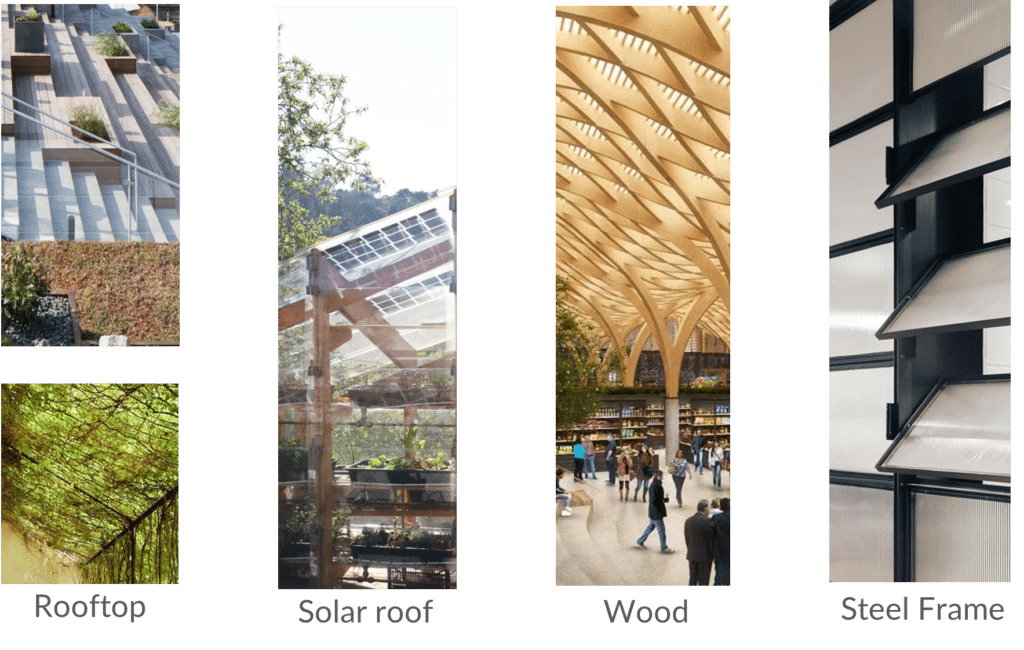boutique /buːˈtiːk/ small, sophisticated, or fashionable business or establishment.
The CLT Factory is a part of the course that focuses on developing a comprehensive understanding of the Entire timber transformation chain, Through the design of five interconnected programs, students will address the principles of circular construction, sustainability, and innovation, while exploring the relationship between large-scale industrial processes and small-scale housing solutions. Projects will integrate functional and habitational components, creating a holistic system that spans from macro to micro scales.



Site

Materials

Form Development
The building’s design was shaped by careful consideration of the site’s thermodynamic properties, programmatic needs, circulation between various typologies, and its relationship with the surrounding environment.






Structure Development
The structural design played a crucial role in shaping the overall building concept, as the site’s limited area required a strategic approach to stacking multiple programs. Additionally, the CLT factory space needed an open, unobstructed layout with high ceilings while also meeting thermodynamic requirements for solar heat gain. Achieving a longer span while optimizing material efficiency was a key design objective. The initial intuitive solution was to develop a circular grid shell structure made of glulam beams, utilizing a triangulated load distribution system to ensure both stability and efficiency.


A series of catenary experiments were later conducted to further optimize the structure and material efficiency. The final design resulted in an arch-like form that efficiently distributes weight using straight structural members, enhancing both stability and material utilization.




Detailed Design
The building seamlessly integrates into the mountain through its terraced design, offering the residential floor a direct and immersive connection to the surrounding forest.

The factory floor is designed to prioritize open, uninterrupted space, ensuring flexibility for various tasks. Given the boutique nature of the factory, this adaptability is essential for experimenting with different types of wood and panels. The mezzanine level serves as both a vantage point for overseeing operations and a transitional space, seamlessly connecting the factory floor with the levels above.


The offices are strategically positioned on the south side to maximize solar heat gain and natural daylight. They are distributed across two floors, allowing seasonal migration between summer and winter for optimal comfort. Their density decreases on the upper floor, creating voids within the volume that enable sunlight and airflow to penetrate the factory space, enhancing both ventilation and thermal performance.


The residences consist of lightweight cardboard houses, organically arranged on the rooftop to resemble forest huts, reinforcing their direct connection to nature. A greenhouse envelops them as a second skin, creating a warmer outdoor environment during the winter months.
The plaza serves as a public recreational space while also acting as a transitional link between the residential level and the floors below. The canteen further enhances this transition, bridging the gap between recreation and office spaces, fostering interaction and community engagement.

The service core provides the segregation between different spaces and different levels; the staircases provide multiple opportunities for vertical circulation.



Energy
The building generates 41% of its energy from solar power, while the remaining 59% comes from biomass sourced from the neighboring sawmill. This integrated energy approach enhances sustainability by utilizing locally available renewable resources.
For a detailed analysis of the solar energy system, please follow the provided link. Energy Management for a Boutique CLT Factory – IAAC BLOG


Water Management
Thanks to the favorable climate and the building’s large scale, the site receives sufficient rainfall to meet 100% of its water requirements. The green roofs require no additional irrigation, while the glass surfaces help in water collection and distribution.
For detailed calculations on water management, please follow the provided link. Water Management for a CLT factory – IAAC BLOG


Envelope
A thin, translucent, manually operated envelope was designed using polycarbonate photovoltaics, seamlessly following the structural patterns. This envelope enhances energy efficiency while allowing controlled daylight penetration and adaptability to environmental conditions.
For detailed envelope design, please follow the link. Resilient Envelopes for a Boutique CLT factory – IAAC BLOG

Internal Views



Models Picture Gallery







/buːˈtiːk/
Noun
a business or establishment that is small and sophisticated or fashionable.
Our CLT Factory embodies a boutique ethos: modest in scale yet purposeful in intent. Serving as a research and innovation hub for new CLT products, it represents a vision for sustainable work-life integration and thoughtful wood construction, with a commitment to sustainable design practices.
In contrast to sprawling industrial complexes, this boutique factory seamlessly integrates with its surroundings. Its stepped, terraced roof incorporates urban farming, communal spaces, and housing, creating an environment that promotes productivity, well-being, and a connection to nature. The first terrace includes offices surrounded by greenery, fostering creativity. The second terrace, featuring a communal plaza with a canteen and amenities, serves as the heart of social interaction. Above, the third terrace offers housing that overlooks the Pyrenees and connects directly to the mountain slope.
At its core lies a vaulted grid shell structure made from local wood, striking a balance between practicality and sustainability. By using timber as much as possible, we aim to reduce our environmental footprint while cultivating a warm and inviting atmosphere. This compact yet thoughtful design is tailored to the local climate, ensuring comfort throughout the year. The factory’s design exemplifies that architecture, much like fine craftsmanship, thrives on innovation, attention to detail, and harmony with its context.

